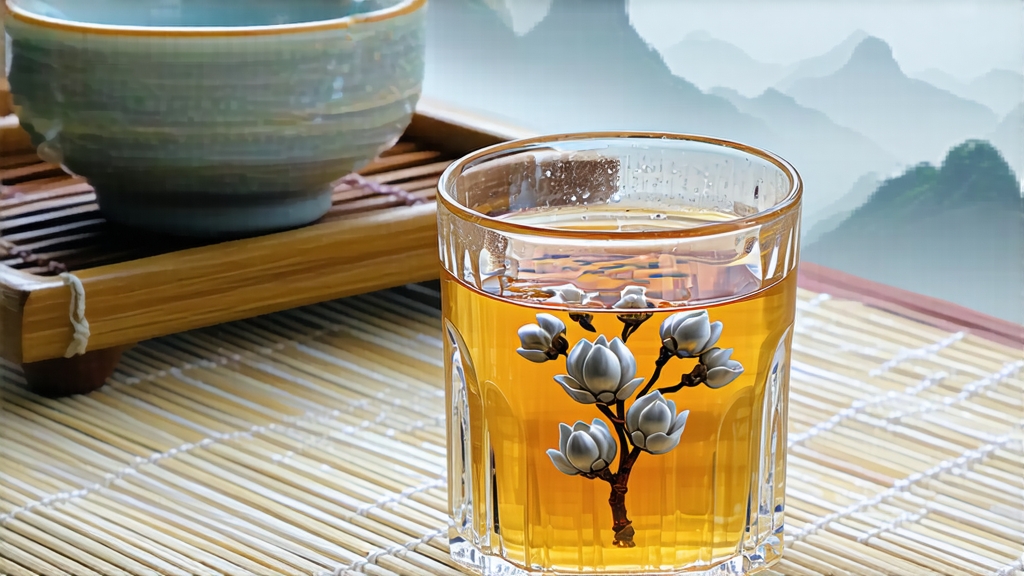
If green tea is the youthful scholar of Chinese tea and pu-erh the venerable sage, then Fuding White Needle—Bai Hao Yin Zhen—must be the moonlit poet who arrives quietly, stays briefly, and leaves verses on the palate that linger for years. Revered since the Song dynasty yet still little-known outside specialist circles, this “Silver Needle” is the most aristocratic expression of white tea, plucked only during a fleeting April window when the spring buds are still closed, still velvet with down, and still charged with the chill mountain air of Fujian’s northern coast.
History whispers rather than shouts here. The earliest written record appears in Song emperor Huizong’s 1107 treatise Daguan Chalun, where he praises “white buds of snow-tip appearance” presented as tribute from Fuding county. For centuries the buds were reserved for the imperial pharmacy, believed to cool blood heat and brighten eyes. Export began only in the 1890s when European botanists, dazzled by the buds’ silver shimmer, shipped small chests to London apothecaries labeled “Chinese Downy Tips.” Paradoxically, the tea’s global fame declined during the early twentieth century because its subtle fragrance was drowned out by the brisk Ceylon and Assam teas then fashionable in the West. Revived in the 1980s by state-led research into its antioxidant profile, Bai Hao Yin Zhen is now the benchmark against which all white teas are judged, yet annual production remains lower than that of a single Darjeeling garden, ensuring every gram still carries the hush of rarity.
Botanically the tea belongs to the Da Bai (Large White) cultivar, a native tree-type camellia whose leaves can stretch fifteen centimeters in summer but, in early spring, yield buds that are plump, ivory, and so downy they resemble baby seal fur. The picking window opens when the bud reaches 2.5–3 cm yet before the first leaf unfurls—roughly seven days after Qingming festival. Experienced pickers work at dawn, gloves on, baskets lined with bamboo leaves to prevent bruising. A full kilogram of finished tea requires roughly thirty thousand buds, all picked by hand in a single morning, before the sun climbs high enough to oxidize the fragile tips.
Craft follows nature’s tempo. Unlike green tea, whose enzymes are killed by pan-firing, white tea is allowed to breathe. The buds are first spread one layer deep on bamboo trays called shaiqing, then left to wither for thirty-six to forty-eight hours in a shaded corridor where mountain breeze, not machines, does the work. Temperature hovers at 22 °C, humidity at 65 %. Every two hours the tea master gently lifts and rotates the trays so each bud loses moisture evenly. The goal is not desiccation but transformation: polyphenols oxidize slowly, amino acids concentrate, and a delicate honeyed note emerges that chemists describe as cis-3-hexenyl but Chinese farmers simply call “mountain emptiness.” When the bud’s moisture drops to 10 %, a final low-temperature bake—no hotter than 40 °C—locks in the fragrance without scorching the down. The entire process is monitored by nose rather than timetable; the tea is ready when a lifted tray exudes the scent of ripe melon and wet stone after rain.
Appearance is the first act of appreciation. Premium Silver Needle stands erect in the glass, each bud a miniature spearhead, silvery-green at the base turning to platinum at the tip. Under light the down refracts like frost, a phenomenon growers call “walking snow.” When brewed, the buds sink slowly, then rise again in a silent ballet, releasing a liquor the color of early morning chardonnay. Aroma is restrained: no jasmine bombast, no roasted chestnut, just a cool suggestion of cucumber skin, white peach, and the faint ozone that precedes a summer storm.
Gongfu infusion is recommended to coax the tea’s layered personality. Begin with 4 g of buds—about two heaping teaspoons—in a 120 ml gaiwan. Rinse briefly at 85 °C to awaken the hairs, discard immediately. First steep: 30 seconds at 80 °C, pour along the gaiwan’s edge to avoid scalding the tips. The liquor should taste like water that once remembered a peach: sweet at the sides